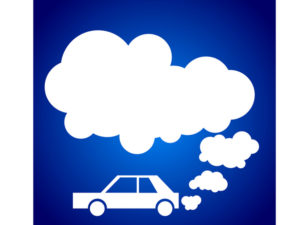Excess diesel NOx kills 38,000 per year, study claims
New research finds that 38,000 people a year are dying as a result of the global failure of diesel vehicles to meet NOx official limits in real-world conditions.

Laboratory-certified vehicles produce 2.3 times NOx emission limits for light-duty diesel vehicles.
The research, carried out by the International Council on Clean Transportation and Environmental Health Analytics LLC and published in Nature, finds that laboratory-certified vehicles meet mandatory emission limits but in the real world produce 2.3 times NOx emission limits for light-duty diesel vehicles and 1.45 times limits for heavy-duty diesel vehicles, on average.
“The consequences of excess diesel NOx emissions for public health are striking,” said Susan Anenberg, co-lead author of the study and co-founder of Environmental Health Analytics LLC. “In Europe, the ozone mortality burden each year would be 10% lower if diesel vehicle NOx emissions were in line with certification limits.”
However, a report published earlier this year by the ICCT found latest heavy goods vehicles emit less than half the NOx of diesel passenger cars, despite significantly higher fuel consumption, with the findings attributed to the use of urea-based exhaust after-treatment systems used on all HGVs – known as selective catalytic reduction (SCR) – and the lean NOx traps still utilised by many lighter-duty vehicles.
The research indicated that after-treatment systems for Euro 6 HGVs are 10 times more effective at removing NOx from exhaust emissions than a Euro 6 diesel passenger car, although SCR is set to become more common among passenger cars with the latest Euro 6c standard, which comes into force this September.
The study predicts that more stringent tailpipe emission standards for heavy-duty vehicles, combined with strengthened compliance for light-duty vehicles and next-generation standards could prevent 174,000 premature deaths annually by 2040.
Commenting on the figures, Nick Molden, founder and CEO of Emissions Analytics, said the overall effect was harder to quantify. “On average, we’re finding a diesel car in Europe puts out five times the level of NOx compared to the official figures. What they’ve done is taken the actual total NOx emissions divided by the number of vehicles and in that average, there are lots of vehicles in lots of countries which dilutes the effect in Europe where cars are more over the limit.
“In Japan and the US the NOx emissions of passenger cars are in line with their own official figures and then heavy duty trucks in Europe are generally in line with the regulations as well. Add all these vehicles together in over the world and you’ve got lots of vehicles behaving fine but then you’ve got isolated problems like the cars in Europe which are massively over, which is creating a lot of the excess, just like trucks in the US and some of the developing countries.”

